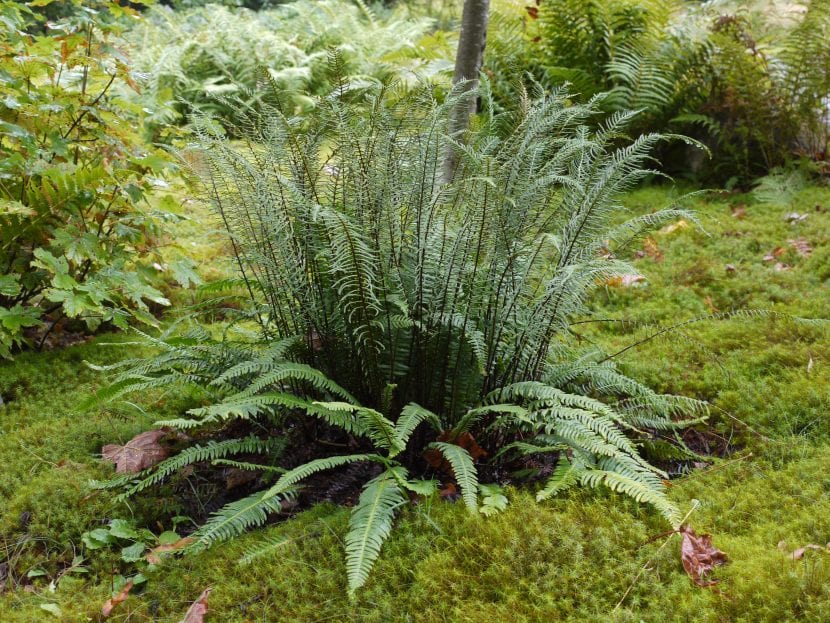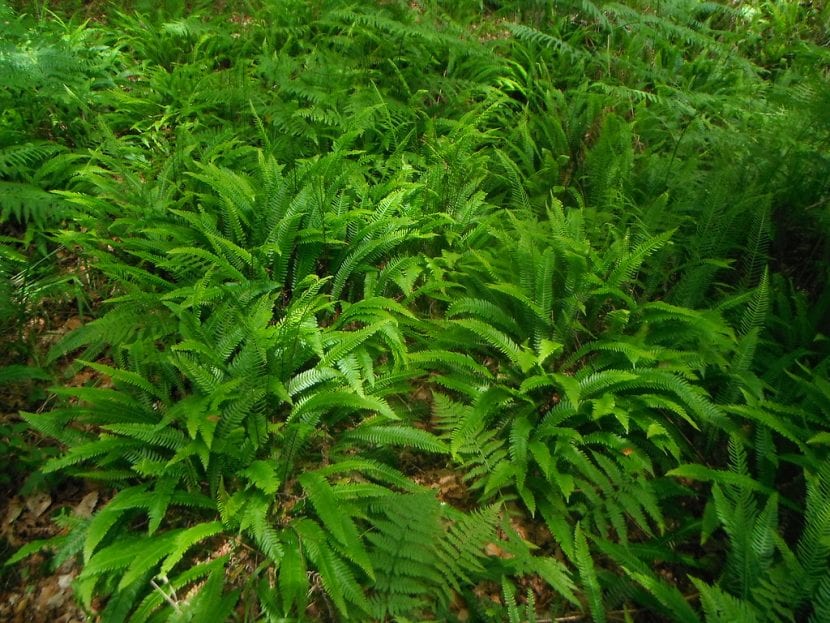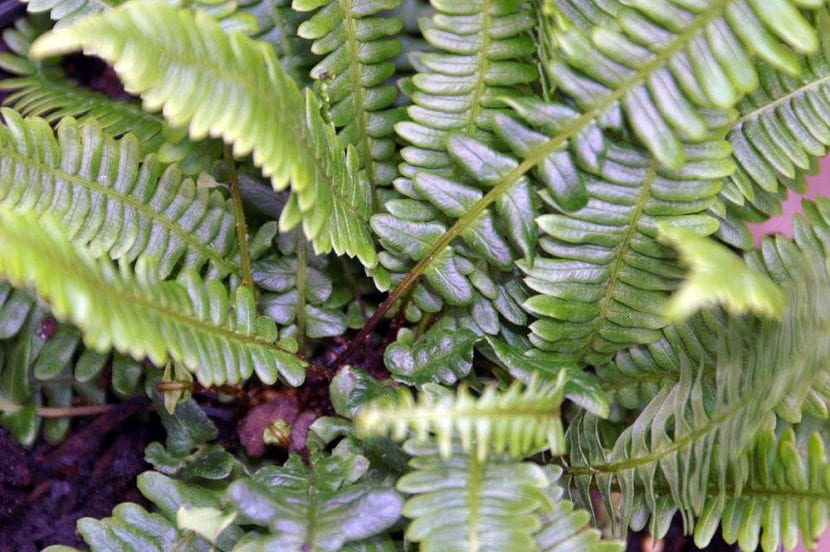
Image - Wikimedia /Drahkrub
Ferns are primitive plants but no less beautiful than 'modern' ones. They do not have flowers, but their size, their leaves (called fronds) and the fact that they live in protected areas of the king star make them very interesting for those shady corners that we end up having in the garden or on the patio. One of the best species is the blechnum spicy, since due to its size it is ideal to have in pots or in small spaces.
If we talk about its maintenance, it is quite simple. It is one of the few that resists cold and frost without problemsSo the weather shouldn't be an impediment to having this wonder with us. Let's know more about her.
Origin and characteristics

Image - Flickr / Ashley Basil
El blechnum spicy is a species of the genus Blechnum, which belongs to the botanical family Blechnaceae, subfamily Blechnoideae. Although it takes millions of years -the ferns began their evolution more than 400 million years ago-, it did not have a name until we humans arrived and the teacher Carlos Linnaeus described it for the first time in the year 1793 in the book Memoires de l'Academie Royale des Sciences.
It is characterized by being a rhizomatous perennial plant, the rhizome having an oblique or erect shape and being covered with scales. The fronds are between 15 and 50cm long, are pinnate, green, sterile or fertile, and have a very short petiole (stem that holds them attached to the rhizome). The sporangia -which is where the spores are produced- are found only on the underside of the fertile fronds, and are arranged on the sides of the main nerve of the pinnae or leaflets of the same.
The origin of this fern is the Eurosiberian region. It is found in humid forests, always growing under the shade of plants that are larger than it.
What are their cares?
Would you like to have a copy? These are the care that we recommend you provide:
Location
Must be outside, in the shade (eye, not total) or semi-shadow. The ideal is to always have it protected from other large plants, walls or high lattices.
Earth

Image - Flickr / nordique
It grows in acidic or very acidic soils, with good drainage. However, those that are clayey and heavy do not hurt too much either. In any case, if you see that the fronds turn yellow, leaving the nerves clearly visible, or if you don't want to take risks, fertilize it from time to time with fertilizers for acidic plants (for sale here) or acidify the irrigation water (below we will tell you how it is done).
If you have it in a pot, use a substrate for acidic plants, with a pH between 4 and 6, like this one they sell here.
Irrigation
Rather frecuente. It is important that the soil never dries out completely. For this reason, depending on the climate, it will be necessary to water an average of 3-4 times a week in summer, and an average of 2-3 times a week the rest of the year. Use rainwater whenever you can, but if you can't get it, don't worry as you can easily acidify it.
How to acidify the water?
In areas where the available water has a lot of lime and therefore a very high pH (above 6), it can be acidified simply by adding the following:
- mix the sum of half a lemon in 1 liter of water,
- or pour a tablespoon of vinegar in 5 liters of water.
You have to check the pH so that it does not drop too low (it must be kept between 4 and 6). This is done with pH strips that they sell in pharmacies, in stores that sell everything (those that were formerly known as "Everything at 100"), and also by clicking No products found..
Subscriber
Throughout the vegetative period (of growth) you have to pay the blechnum spicy. From early spring to late summer, and even in autumn if temperatures are mild, you will appreciate a regular supply of compost, such as guano in liquid form (for sale here), compost, herbivorous animal manure (goat and cow manure are the most advisable), or some more homemade ones such as egg and banana peels for example.
Multiplication

Image - Wikimedia / David J. Stang
El blechnum spicy, like all ferns, they multiply by spores. This particular species can also reproduce by division of the rhizome, although it is more difficult. Let's see how to proceed in each case:
Spores in autumn-winter
To achieve a higher germination percentage, they must be sown in autumn-winter, since they need to spend some cold to be able to germinate. The sowing will be done in trays -cork for example- with some holes in the base that will serve as drainage, or in pots -also with holes-.
The substrate to use is mulch (for sale here) mixed with 30% perlite (for sale here). Cover them with a thin layer of this soil mixture, and keep them outside, in semi-shade or shade, always moist.
If all goes well, they will germinate throughout the spring.
Rhizomes in winter-spring (only adult and well-developed plants)
To multiply it by rhizomes, you have to wait until the plant is in vegetative rest, otherwise the chances of it coming out well would be slim. A) Yes, You have to remove the plant from the pot, and with the help of a previously disinfected knife, divide it in two.
Now, it will only remain to plant those pieces in individual pots or in other areas protected from the sun in the garden. And give them a good watering 😉.
Planting or transplanting time
En spring, when the risk of frost has passed.
Rusticity
It resists frosts of up to -12ºC.

Image - Flickr / brewbooks
What did you think of the blechnum spicy? Did you know him?